| C H A P T E R 7 |
|
Installing Windows Server 2003 |
This chapter describes how to install the Windows Server 2003 operating system directly onto a Sun Fire X4600 server using the Windows Server 2003 media.
Before beginning the operating system installation, make sure that the following requirements are met.
For requirements specific to the mass storage driver and Windows media delivery methods that you have chosen, see TABLE 7-1.
|
Connect the USB diskette drive to the rear of the server and insert the mass-storage device diskette into the diskette drive.[1] Note: Connecting the USB diskette drive to a USB connector on the front of the server will cause the installation to fail. |
|
|
Connect the diskette drive to the JavaRConsole system (if necessary) and insert the mass-storage drivers diskette into the diskette drive. |
|
|
Ensure that the floppy.img file is accessible from the JavaRConsole system. |
|
|
Make sure that the Microsoft Windows Server 2003 installation media and a DVD-ROM drive are available. |
|
|
Insert the Microsoft Windows Server 2003 installation media into the JavaRConsole system’s CD or DVD-ROM drive. |
|
|
Ensure that the Windows Server 2003 installation media is accessible from the JavaRConsole system. |
Follow these steps to install the Microsoft Windows Server 2003 software onto your Sun Fire X4600 server.
| Note - The Solaris Operating System is preinstalled on the Sun Fire X4600 server boot disk. The Windows installation will format the boot disk and all data will be lost. |
1. Make sure that you have completed all of the requirements listed in Installation Requirements.
2. Power cycle the Sun Fire X4600 server.
3. When the Press F8 for BBS POPUP prompt appears on the BIOS POST screen, press F8.

When the BIOS POST process is complete, the Boot Device menu appears.
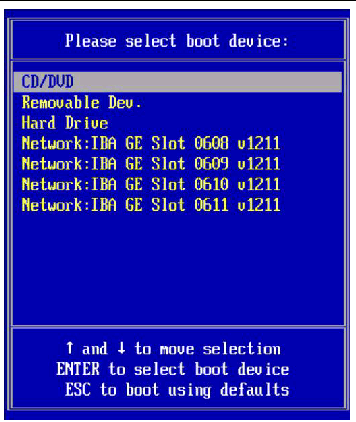
4. If you have selected the Windows Local installation method, insert the CD now.
5. Select CD-ROM from the Boot Device menu.
| Note - After you press Enter in Step 6, the next actions must be performed quickly. Read Step 7 and Step 8 before proceeding, so that you will know what to look for. |
7. When prompted with Press any key to boot from CD, quickly press any key.
| Note - The prompt is displayed for five seconds and is easy to miss. If you miss the prompt, you will need to restart the system and go back to Step 3. |
During the early part of Windows Setup, the following message appears at the bottom of the screen:
Press F6 if you need to install a third party SCSI or RAID driver.
8. Press F6 to install mass-storage drivers.
A screen appears, prompting you to press S to specify additional devices.
FIGURE 7-3 Specify Additional Device Screen
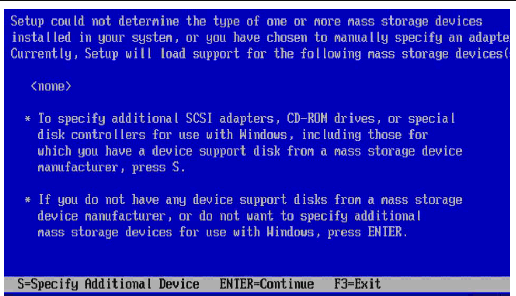
9. Make sure that the mass storage drivers are accessible according to the mass storage driver installation method that you have selected.
10. Press S to specify additional devices.
A screen appears listing the available drivers.
FIGURE 7-4 Select SCSI Adapter Screen
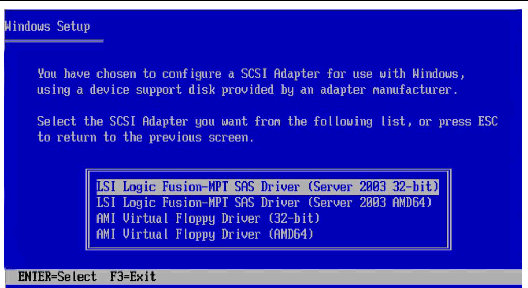
11. Select the appropriate version of the LSI Logic Fusion-MPT SAS Driver, depending on the version of Windows you are installing (Server 2003 32-bit or Server 2003 AMD64), then press Enter.
A screen appears, confirming your selections and allowing you to select additional drivers.

FIGURE 7-5 Specify Additional Device Screen
12. If you are installing Windows using the Diskette Remote or the Diskette Image Delivery Method, press S; otherwise press Enter and proceed to Step 14.
A screen appears listing the available drivers.
FIGURE 7-6 Select SCSI Adapter Screen
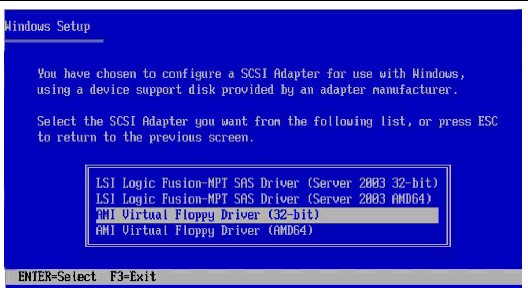
13. Select the appropriate version of the AMI Virtual Floppy Driver, depending on the version of Windows you are installing (32-bit or AMD64), then press Enter.
Windows Setup will display the following screen, showing both the drivers you have selected.
FIGURE 7-7 Specify Additional Device Screen
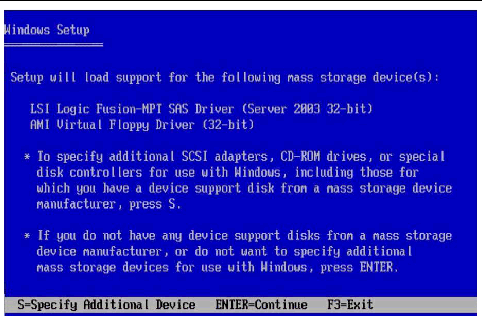
The Welcome to Windows Setup screen appears.
FIGURE 7-8 Welcome to Setup Screen
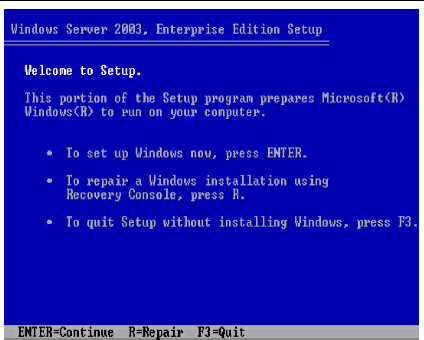
Windows Setup will continue and display the following screen, allowing you to select Express Setup or Custom Setup.
FIGURE 7-9 Select Setup Screen
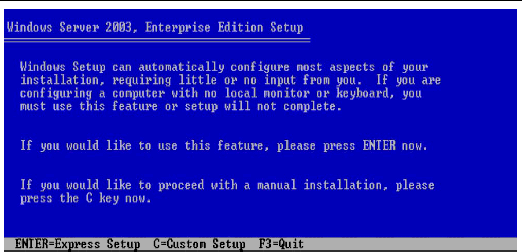
16. Press Enter for Express Setup.
17. Follow the onscreen instructions to complete the Windows Server 2003 Installation.
During installation, the system will reboot and the following message could appear.
FIGURE 7-10 Remove Disk Message
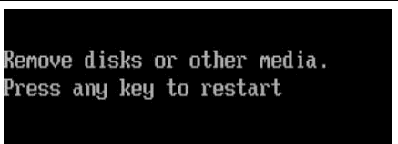
If this message appears, you will need to complete the following steps to complete the installation:
a. Do one of the following, depending on which mass storage driver delivery method you have selected:
b. Press any key to restart the system and complete Windows Server 2003 Installation.
18. Proceed to Updating the Critical System-Specific Drivers.
Copyright © 2008, Sun Microsystems, Inc. All Rights Reserved.